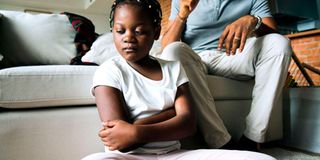Is sending your child to a rehabilitation school the solution?

What you need to know:
- According to the Department of Children’s Services database, between 2006 and 2010, the number of child offenders in the country increased by 50 percent.
- Currently, there are 10 rehabilitation schools in the country with a capacity of 150 children per school.
- When children commit crimes, they are not sent to the same prisons as adults because of their age, vulnerability, and inability to interact with adults.
In June 2021, a form three student at Ainamoi Secondary School hit the principal with a wooden plank that had a projected nail, in protest of being sent home. In January 2021, a 14-year-old girl was arrested in Kisii after a failed attempt to poison her father with laced porridge. She was infuriated because her father had asked her to terminate a relationship with her form four lover. Kisii Police Commandant said that the girl would be charged with attempted murder. In September 2020, a fifteen-year-old girl in Lang’ata, Nairobi was arrested for stabbing her boyfriend (a form two student) to death.
These are just a few of the rising cases of crimes committed by children.
According to the Department of Children’s Services database, between 2006 and 2010, the number of child offenders in the country increased by 50 percent.
When children commit crimes, they are not sent to the same prisons as adults because of their age, vulnerability, and inability to interact with adults. In Kenya, minors are mainly sent to juvenile schools for behavioural corrections or remand homes for children. However, not all children in these rehabilitation schools are sent there for major crimes, some are handed over by their parents when they become uncontrollable. Children in need of care and protection can also be taken to these rehabilitation centres.
“I feel ashamed. I feel guilty. I feel as though I have failed as a mother!” says Hannah, whose sixteen-year-old son is admitted at a rehabilitation school in Kericho County. Hannah says that her son was sent to the rehabilitation school (formerly known as approved school) in May 2021 for continuously stealing and selling off items at home, and attempting to burn down the school dormitory when he was given a punishment by the school principal. “He was an obedient boy who dreamed of becoming a pilot. I don't know how he turned into a rebel,” she says, “Now he says he hates his life and his family. It is too painful.”
According to psychologist and family coach Michael Mundia, family structure plays a central role in preventing or exposing children to child delinquency. For instance, children who suffer from child delinquency, and who later end up in rehabilitation centres are likely to have low or zero parental monitoring. “In many of the child delinquency cases, lack of parental monitoring and supervision is ranked as a major cause. Parents are too busy to parent their kids,” he says.
Murigi Kamande, an advocate of the High Court of Kenya says before a child is sent to a rehabilitation school, the parent must obtain a committal order. Currently, there are 10 rehabilitation schools in the country with a capacity of 150 children per school. The schools are Kirigiti, Dagoretti, Kisumu, Kericho, Kakamega, Wamumu, Kabete, Gitathuru, Likoni and Othaya rehabilitation centres. Two of these schools are for girls and eight are for boys. Mr. Kamande says that before boys are placed in the rehabilitation centres, they first undergo an assessment program at Gitathuru Rehabilitation School. “From there, they are sent to various schools based on whether they are high, medium, or low risk,” he says. Girls undergo a similar process at Kirigiti Girls Rehabilitation School.
Legally, only children above the age of ten years and below the age of 15 are sent to approved schools. Those between age 15 and age 18 are sent to remand homes for children under the Department of Prisons. In contrast to rehabilitation schools, remand homes for children are more likely to be overcrowded.
“Remand homes for children tend to hold children who are either undergoing the juvenile criminal justice system or children in need of care and protection awaiting probation reports,” says Kamande.
The primary aim of sending a child to a rehabilitation centre or a remand home for children is to provide behavioural correction and later reunite with their family. The African Charter on the Rights and Welfare of the Child which Kenya is a signatory recommends that the treatment of every child in conflict with the law if found guilty of infringing the penal law, shall be his or her reformation, reintegration into his or her family and social rehabilitation.
When a child is sent to a rehabilitation school, Mundia suggests that a parent should go through the rehabilitation process with them. When you find time to spend with your child while he or she is at the rehabilitation centre, be careful not to make them feel imprisoned and unworthy. “This draws the parent closer to the child and at the same time, reassures the child that they are not irredeemably awful, they are loved, wanted and able to change for the better.” He adds that parents whose children are in rehabilitation schools should begin a discharge program as their child’s release date nears. “This will make it easier for their kids to adapt without relapsing to their old behaviour or soaking in guilt,” he says.
Before a child is released from an approved school, the children's department will prepare an environment adjustment report that will assess the child’s recovery and ability to live in the outside world. Similarly, you should avoid raising your expectations once your child returns home from the rehabilitation centre. “His recovery does not begin and end with the rehabilitation school. It will continue long after he has returned home,” says Mundia. You must draw clear and fair rules and boundaries that the child must adhere to even after they leave the rehabilitation school. If they had stopped going to school, encourage them to resume their studies.
Quick takeaway
Risk factors for child delinquency include
- Poor cognitive development
- Early antisocial behavior
- Low intelligence
- High behavioural activation or low behavioural inhibition
- Poor academic performance and aspirations
- Large family size
- Poor family structure
- Hyperactivity
- Divorce, mistreatment, and family violence


